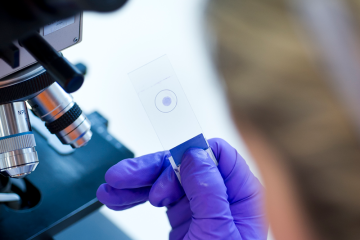Project grant
The human tumour micro-environment modelled in in vitro biomatrices and applied to cancer drug discovery

At a glance
Completed
Award date
October 2009 - February 2013
Grant amount
£407,235
Principal investigator
Dr Anna Grabowska
Co-investigator(s)
- Dr Richard Argent
- Dr Rajendra Kumari
- Dr Snjezana Stolnik Trenkic
Institute
University of Nottingham
R
- Replacement
Read the abstract
View the grant profile on GtR
